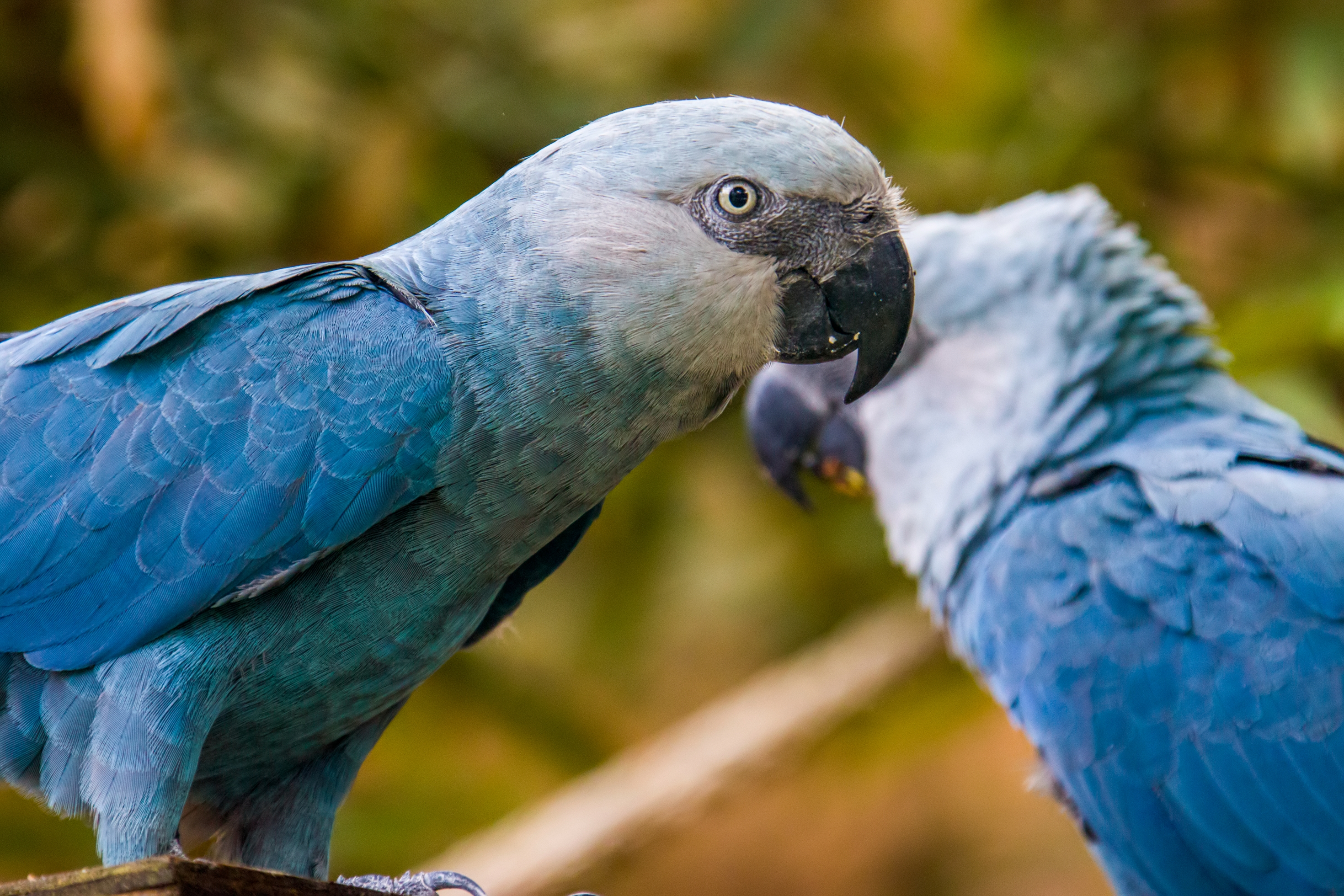Declared extinct in the wild decades ago, a newborn Spix’s macaw hatchling at a European zoo is offering the species fresh hope.
The Spix’s macaw (Cyanopsitta spixii) is a brilliantly blue parrot once native to the dry tropical forests of northeastern Brazil. With its vivid cerulean plumage and paler gray-blue head, this striking bird is perhaps best known as the inspiration for the 2011 animated movie Rio.
The species was officially declared extinct in the wild around 2018/2019, although the last wild bird was seen in 2000. Today, a small number of Spix’s macaws survive only in captivity, housed in zoos and breeding programs around the world.

Two adult Spix’s macaws chilling out in captivity.
Image credit: Danny Ye/Shutterstock.com
One such facility is Pairi Daiza, a private zoo located in Hainaut, Belgium. While three Spix’s macaws are on display to the gawping public, nine others live in a specialized private aviary as part of an international breeding program.
During their tenure at the zoo, the parrots have laid 100 eggs, but none have ever been fertilized. Bird keepers were overjoyed to find that their 101st egg was fertilized, a success that they think could be credited to a recent change in the birds’ diet.
The egg was swiftly taken away from the nest, as first-time macaw parents can have difficulties nursing eggs, and put in the care of a team of specialists in rare birds. Their close attention paid off, with the egg hatching on the morning of September 21, 2025.
Ever since, teams of bird experts have been handfeeding the chick every two hours, day and night.
“Feeding the chick every two hours is exhausting, but also incredibly motivating, because we know we’re literally holding the future of one of the world’s most endangered species in our hands,” Thomas Biagi, rare bird keeper at Pairi Daiza, said in a statement.
The newborn currently lacks its signature blue feathers, appearing more like an undercooked sausage than a tropical parrot.
While it will not be reintroduced into the wild, it will grow to become a key breeder in the program, helping to expand the population alongside other chicks expected in the coming years. Together with ICMBio (Chico Mendes Institute for Biodiversity Conservation, Brazil) and the São Paulo Zoo, Pairi Daiza is working to build up a genetically diverse population, with the long-term aim of supporting the species’ survival.
Spix’s macaws have been released into the wild in Brazil as part of a reintroduction program, with the first birds released in June 2022. However, the program was unceremoniously ended without renewal, leaving it with an uncertain future.
While the future is still far from certain, it’s hoped that Hatchling 101 could ultimately play a crucial role in ongoing efforts to restore a stable population of Spix’s macaws to their native homeland.
Source Link: Extinct In the Wild, An Incredibly Rare Spix’s Macaw Chick Hatches In New Hope For Species